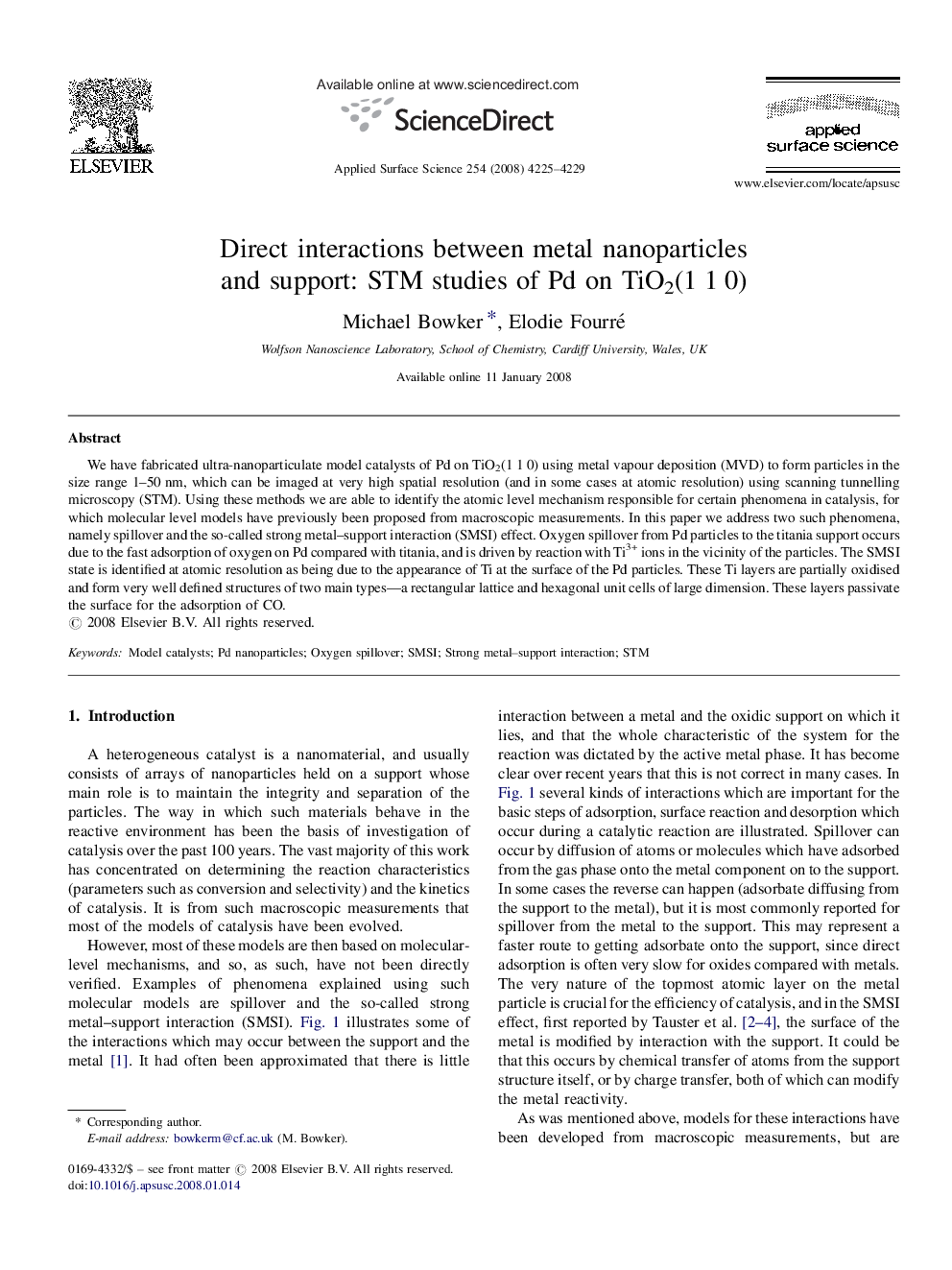| Article ID | Journal | Published Year | Pages | File Type |
|---|---|---|---|---|
| 5364233 | Applied Surface Science | 2008 | 5 Pages |
We have fabricated ultra-nanoparticulate model catalysts of Pd on TiO2(1Â 1Â 0) using metal vapour deposition (MVD) to form particles in the size range 1-50Â nm, which can be imaged at very high spatial resolution (and in some cases at atomic resolution) using scanning tunnelling microscopy (STM). Using these methods we are able to identify the atomic level mechanism responsible for certain phenomena in catalysis, for which molecular level models have previously been proposed from macroscopic measurements. In this paper we address two such phenomena, namely spillover and the so-called strong metal-support interaction (SMSI) effect. Oxygen spillover from Pd particles to the titania support occurs due to the fast adsorption of oxygen on Pd compared with titania, and is driven by reaction with Ti3+ ions in the vicinity of the particles. The SMSI state is identified at atomic resolution as being due to the appearance of Ti at the surface of the Pd particles. These Ti layers are partially oxidised and form very well defined structures of two main types-a rectangular lattice and hexagonal unit cells of large dimension. These layers passivate the surface for the adsorption of CO.
